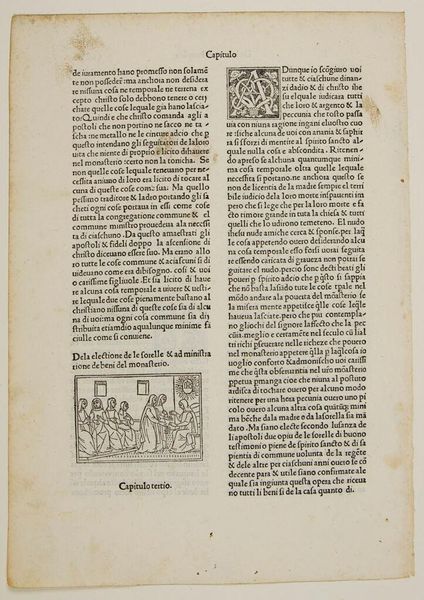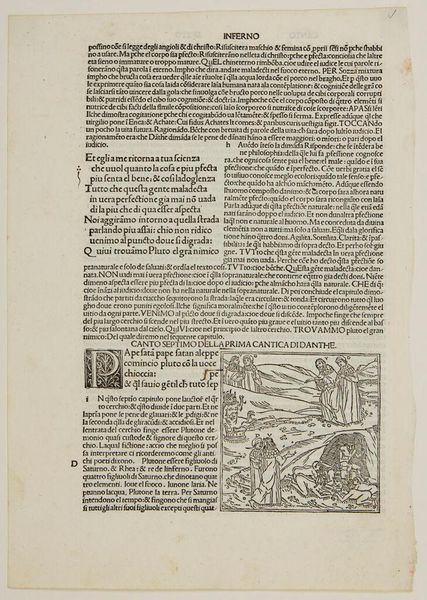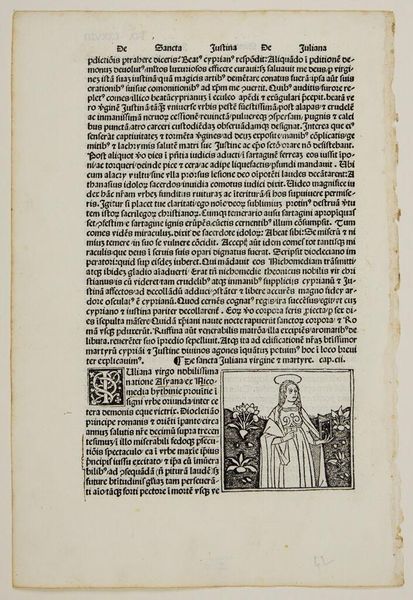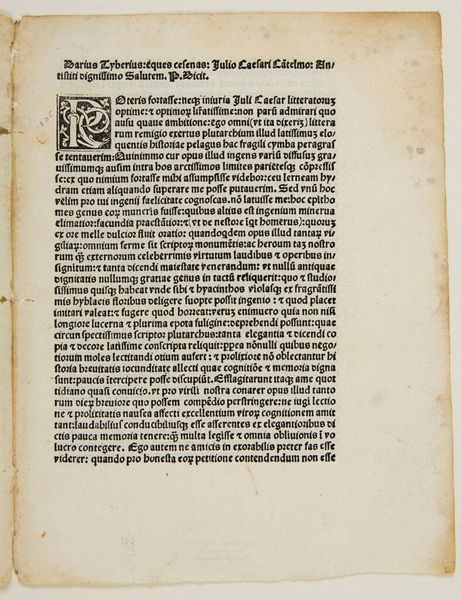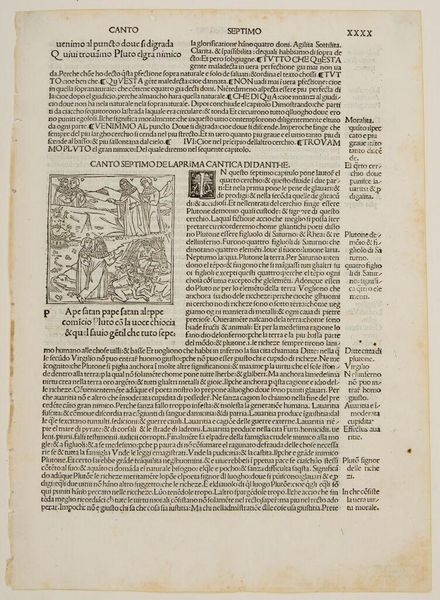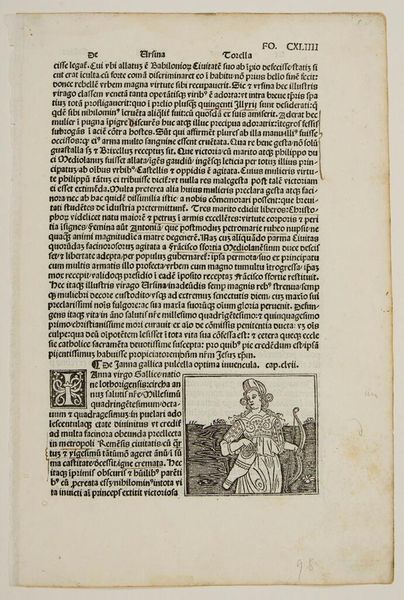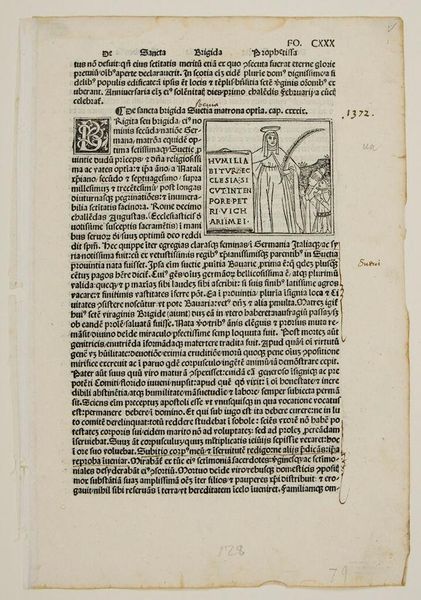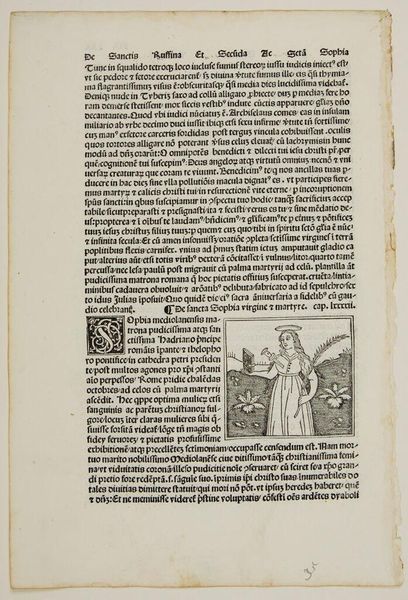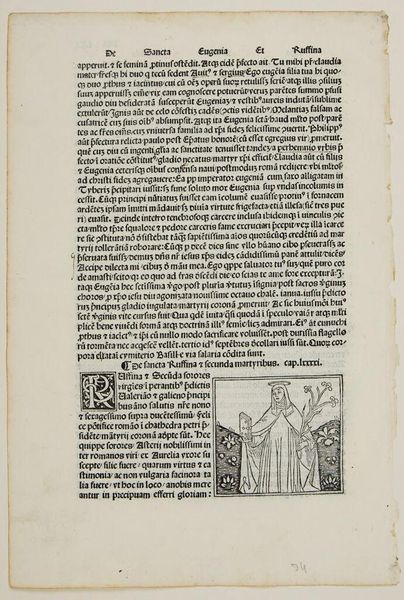
Letter 120 to Hedibia - Question 3: How are the discrepancies in the evangelical narratives to be accounted for? How can Matthew 28:1 be reconciled with Mark 16: 1,2? c. 15th century
0:00
0:00
Copyright: CC0 1.0
Curator: Here we have a page from an anonymous text titled, "Letter 120 to Hedibia," undated but likely printed in the 16th century. It's a fascinating exploration of discrepancies within the Gospels. Editor: My first impression is how densely packed the text is, and how small the woodcut illustrations are, given the weight of the theological questions they attempt to answer. Curator: Indeed. The passage focuses on reconciling the accounts of the Resurrection in Matthew and Mark, specifically regarding when Mary Magdalene visited the tomb. It's a deep dive into biblical interpretation. Editor: Absolutely. And it's interesting how the text seems to acknowledge the contradictions rather than glossing over them. It even offers possible solutions to the "Quartia Questione." Curator: The illustrations themselves are simplistic, yet they capture the key moments: Christ emerging from the tomb, and Mary's encounter with the angels. They served as visual aids in a time when literacy was not widespread. Editor: It speaks to the ongoing human struggle to reconcile faith with reason. It highlights a continued interrogation of canonical narratives in the face of conflicting accounts. Curator: It really provides insight into the intellectual climate of the time. A willingness to question and analyze religious texts, even when dealing with sacred narratives. Editor: I agree. It's a powerful reminder that engaging with historical texts means acknowledging the complexities and contradictions they present.
Comments
No comments
Be the first to comment and join the conversation on the ultimate creative platform.

